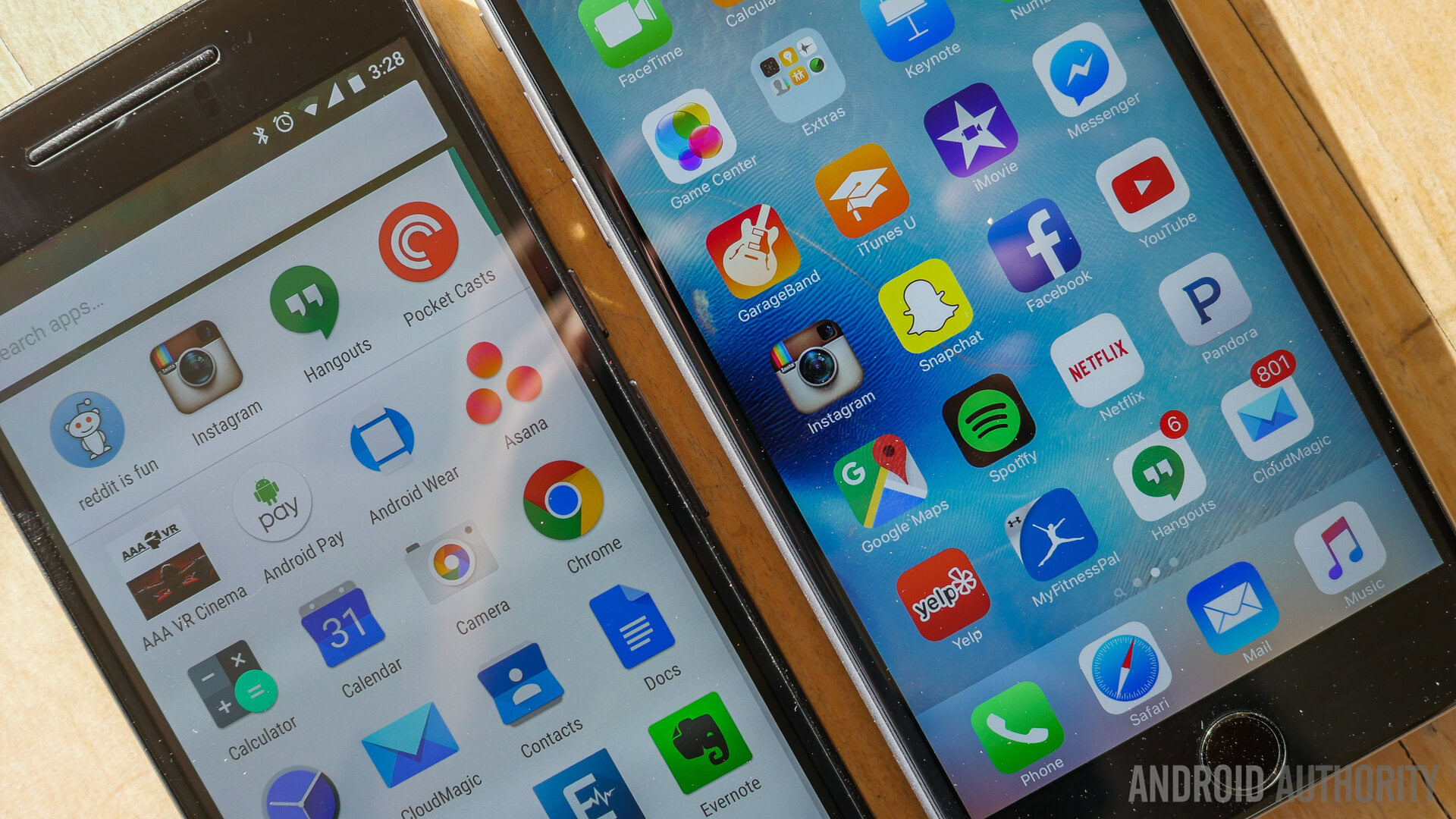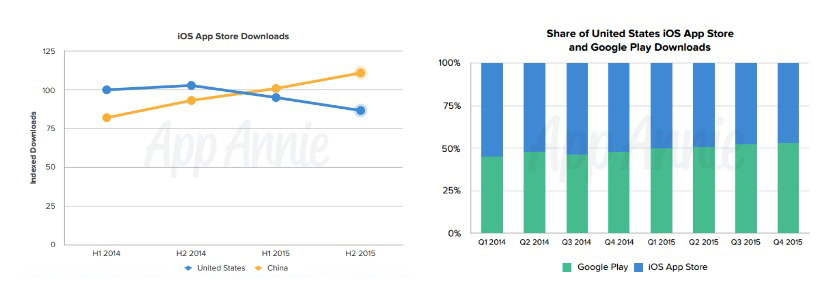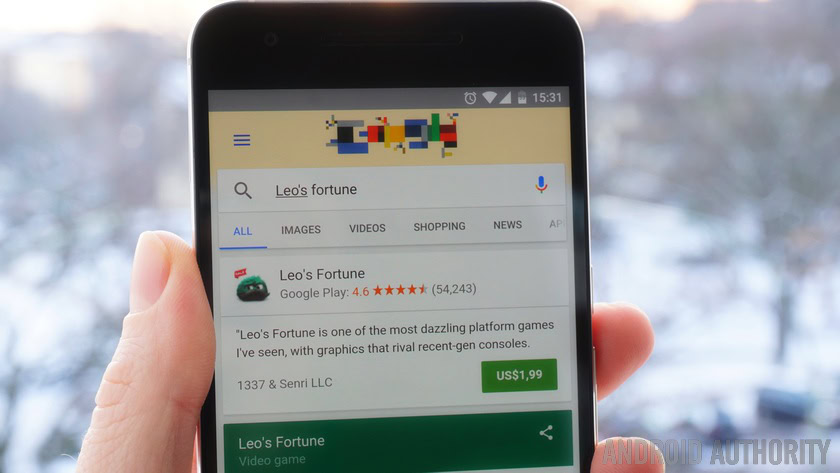Affiliate links on Android Authority may earn us a commission. Learn more.
The money is on the App Store, but Google Play owns the future

Apps are an interesting business with interesting stakes. Who wins? The platform with the most installs? Highest revenue? Fastest growth? It all depends on your perspective, and no one does an app market overview better than App Annie’s annual app retrospective. With the 2015 report now out, who were the winners and in what categories?
In some ways there are no surprises: Google Play had significantly more app installs than iOS – double the number in fact – but Apple had 70% more app revenue than Android. So Android has the numbers but Apple has the money. So far, so familiar. But when you drill the numbers down a little, you find all kinds of interesting things:
- Apple’s app install numbers have stagnated over the last two tears, with 2015’s install figures almost identical to 2014 and 2013.
- In the US, Google Play app installs beat iOS installs in every quarter, increasingly so as the year progressed.
- Globally, Android increased its lead in number of installs from 60% more than iOS in 2014 to 100% more in 2015.

Making more out of less
Despite not generating any more app installs than usual, Apple still managed to significantly increase the amount of money it made from the same number of installs. Apple has doubled its app revenue in the last two years without generating any more app installs. This means that Apple has generated double as much money out of the same sized resource – an impressive feat in itself.
Android, on the other hand, has almost doubled its install numbers in the last two years and more than doubled its revenue – but despite much larger overall install numbers than iOS, it still earned only a little over half as much money. This means that while the number of Android users is growing rapidly, those users tend not to pay for apps. Apple users, however, tend to pay for apps more and also pay more for those apps.

New markets
Android’s revenue growth over the last year has slowed a little, whereas iOS’s has held strong. This is large part to China becoming a huge uptake market for Apple in 2015. China doubled its spending on iOS apps last year and accounted for the third most valuable market for iOS apps after the US and Japan. At the same time, China was the largest downloader of iOS apps in 2015 and US installs decreased steadily throughout the year.
On the Android front, emerging markets were the biggest growth areas for Google, with Brazil, India, Indonesia, Turkey and Mexico responsible for almost half of the increase in Android installs compared to the year prior. Games were the big earners for both platforms, with games accounting for 90% of Android app revenue and 75% of iOS app revenue.

So what can we glean from all this fun information? We can, of course, put down Apple’s revenue growth to China, and make the rather obvious observation that Google Play is not yet in China. But the numbers also indicate that even when Android apps are available via Google Play in China, that the install numbers will soar but the app revenue will not.
But what about the US? The data show that iOS installs decreased steadily throughout the year 2015, just as Android installs increased in the US throughout the year. This would seem to point out another obvious fact: that Apple’s “30% of Android switchers” didn’t come from the US, where Android installs are actually on the rise compared to iOS.
[related_videos align=”center” type=”custom” videos=”665036,663061,658943,652689″]
If all of these claims have your head spinning a little, don’t be afraid. Everyone’s heads spin when these new reports come out and the spin doctors latch onto a specific bit of information and use it to cast the rest. As you can hopefully tell, even though the numbers seem to say one thing clearly, they can also be used to say the opposite. it all depends on your perspective. So while Apple continues to take its winnings to the bank, Google Play owns the future.
What do these numbers tell you? What do you think is more important: reach or revenue?